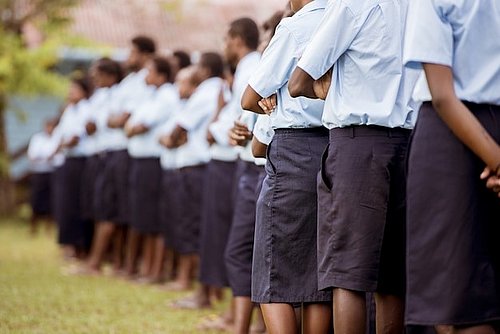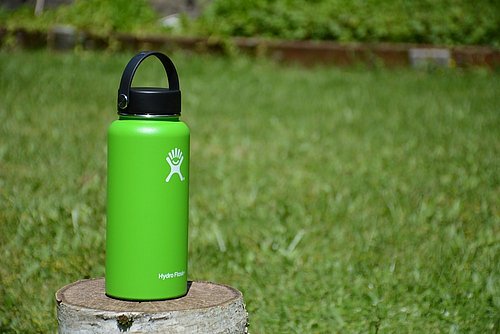A Greener Start to the School Year
Prefer to listen? Click below
Back-to-school is always a mixture of excitement and extra coffee shots for teachers across the globe. We’re always rushing around making sure everything is ready for the new school year. This mad rush can lead us to over-preparing, over-decorating and, often, forgetting what’s really important.
In this post we’re going to look at how we can start our school year on a greener foot. We’ve got ten tips to help you hold back on buying those new highlighters and think about setting an example for our students to really Think Green.
1. Involve your students in the classroom set-up
One of our biggest tasks before we get back to school is making our classroom look fantastic. This is a wonderful opportunity to get your class involved. Ask them how they’d like the classroom to look and more importantly get them to use materials you already have to get it looking great. That SDG poster from last year will still be fine and those empty boxes from new books can be turned into some wonderfully colourful recycling bins which can take pride of place at the front of the classroom alongside your scrap paper box and pen repair station. Get your students help create and put up a jobs chat. Make sure it includes green jobs like Electricity Monitor, Chief Recycling Officer and Plastic Auditor.
2. Encourage your students to reuse school supplies
It feels like every shop you walk into has a huge array of back-to-school supplies. Before the school year gets started make sure your students, and their parents of course, do a proper stationery and equipment check before heading out to buy more things. Backpacks can be used year after year, pens, pencils and protractors don’t need to be bought again either. There’s no denying the smell of a new pencil case is wonderful, but is it necessary? The simple answer is no. Encouraging students and parents to stop and think for a moment about whether they really need new EVERYTHING will help instil a greener mindset as they’ll be using their school supplies until they run out, rather than replacing them just because it’s September.
3. Look for plastic, planet-friendly alternatives
If you and your students do need new supplies, look for sustainable alternatives. We don’t need to use single-use-plastic pens and our rulers can be made of wood. Perhaps look for a plantable pencil or even some recycled items.
4. Arrange a uniform swap
Buying a new uniform each year is expensive both in terms of money and resources. Before school starts suggesting to parents that they get together for a clothes swap is a great idea. If this is impossible, set up a second-hand uniform shop at school.

Source: wirestock / freepik
5. Recommend Reusables and Refillables
We use about 55 million plastic bottles an hour. That’s about 5,500 bottles every time we blink. Ensuring our students have refillable bottles means we can save about 30 bottles a day, which is about 5,400 throughout the school year. Your class alone can save a whole ‘blinksworth’ of plastic. Upgrading to reusable bags for lunch is a great idea, too. Beeswax and silicone are great alternatives. Remember as the teacher you can set the example for students to follow.

Source: Gary Tou / unsplash
6. Listen to your students
As teachers we recognize that it’s our job to make sure our students learn. It’s also our job to help them grow. Take time at the start of the term to find out what they want to learn about in terms of the planet. It will lead to greater engagement and empower them to make a difference.
7. Prepare your green calendar
While you’re marking down your long weekends, holidays and students’ birthdays, take the time to put a few key environmental days into the calendar and make sure it’s visible to the students. Leading up to those dates you can have a greater focus on the planet. If you feel like there is a date missing, why not add one yourself?
Here are a few key dates:
September 22: World Car Free Day
October 4: World Animal Day
March 22: World Water Day
April 22: Earth Day
June 5: World Environment Day
8. A greener commute
We all know that short car journeys have an enormous impact on the planet. Propose a greener school run. Lead by example and grab your bike for your daily commute, within reason of course. Suggest students walk to school together. This would tie in really well with World Car Free day on September 22. For those who live more than a kilometre away, suggest carpooling to the students and parents in your class.

Source: skitterphoto/pixabay
9. Think about paper usage
It’s unreasonable to suggest a teacher goes paper free. It isn’t unreasonable, however, to think long and hard about the paper we need to use. Do we have to make 30 copies of every worksheet? When printing something, is it a great use of paper to stick it into a notebook? Are you making sure students use both sides of the paper? Do you have a scrap paper pile for your students’ notes and doodles? Simple steps can help alter mindsets dramatically.
10. Start an eco-club
Empowering our students to become greater global citizens should be our goal as teachers. Getting an eco-club started is a great way to do just that. An eco-club, or Green Group, is composed of volunteer students taking their time to focus on environmental issues that matter to them. It’s a wonderful way of giving autonomy to our students over changes to their local environment and push for change within the school community. You can help guide them but ultimately the decisions that are made will be theirs. Give them the tools to stand up and use their voices .
Back-to-school is an exciting and scary time for teachers everywhere. With so much to prepare, it might feel like taking these tiny greener steps is just something extra on our plates. But ask yourself, if not us, who? If not now, when?
We know that as teachers, we may not have the power to reverse global warming alone, but we do have the unique power to help shape a brighter future. We have the power to amplify a greener message. We can make a difference in ourselves, our students and beyond.

